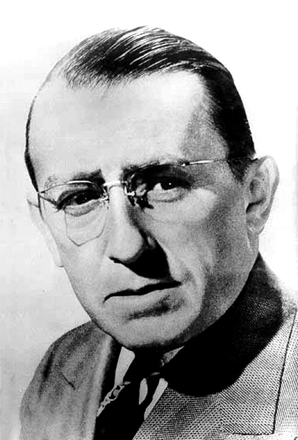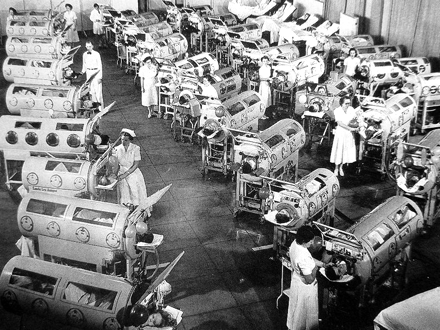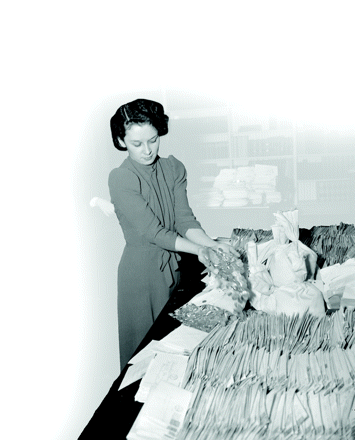A Storied Recipe for Success, Infused with Basil
- John W. Nelson, PhD
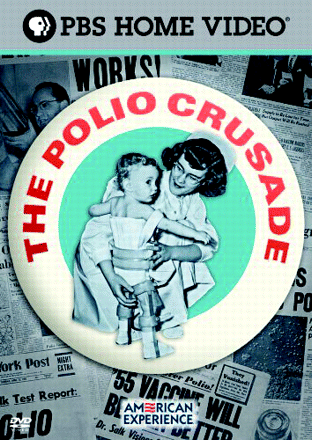
The Polio Crusade Director: Sarah Colt Number of discs: 1 Rating: Unrated Studio: PBS (Direct) 2009. 60 minutes. $24.99 UPC: 841887010399
“To strive with difficulties, and to conquer them, is the highest human felicity….”
—Samuel Johnson
The greatest intentions are rife with unintended consequences. Improved sanitation is no exception. As American cities developed better methods of sanitation in the early and mid part of the twentieth century, the rate of polio infection during the summer months increased. Before improvements to sanitation, nearly all children were born with maternal antibodies specific for polio. Improved sanitation led to children becoming exposed to polio later in life—at a time when maternally bestowed, protective antibodies were no longer present. Infants and children were thus less likely to be exposed early to polio virus and therefore less likely to develop life-long immunity.
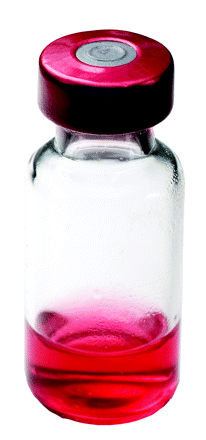
Released earlier this year on DVD, “The Polio Crusade,” first shown on PBS’s “American Experience,” deals with the expected topics of Salk’s success, Sabin vs Salk, Franklin Delano Roosevelt’s contracting polio while relaxing at Campobello, New Brunswick, and FDR’s purchase of the Georgia Warm Springs Foundation (GWSF) where polio sufferers could come and enjoy athletic exercises and recreation designed to help their spirits, if not their bodies. The strength of the story told on this DVD, however, lies in detailing the birth and development of the effort to eradicate polio: crusades are promulgated from above but sustained from below. Much of the story is devoted to the creative efforts of Basil O’Connor, who spearheaded the campaign to improve the lives of victims of polio. FDR asked his law partner, O’Connor, to oversee the GWSF and maintain the fight against polio, a job O’Connor was loathe to take but did, as his loyalty to FDR was devotional.
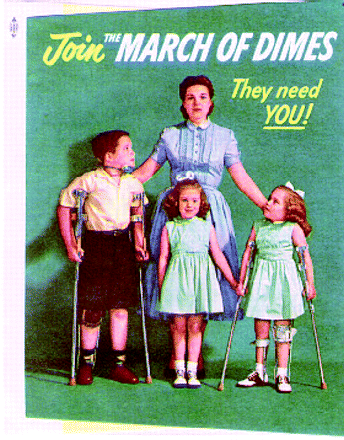
Until 1938, polio patients relied on the generosity of private foundations rather than the government for aid. O’Connor saw the need for a bold, new approach to fund polio research and treatment. Rather than relying on huge sums donated by a relative few, he saw the power in small donations donated by the many. “No one is too poor to give a dime to help a kid walk again.” Thus, the push to get people to “send a dime to President Roosevelt at the White House” was unfathomably successful. Nearly two million dollars were raised in the first campaign alone, and the March of Dimes (a term concocted by entertainer Eddie Cantor) was born. To keep the fund raising momentum going, O’Connor changed tactics. The message became more frightening and personalized: polio could strike anyone at any time. Short films on polio were screened at cinemas before the feature film and a bucket was passed through the audience to collect dimes. The March of Dimes grew, represented by 3,000 local chapters, and by the late 1940s, more than twenty million dollars per year was taken in. In fact, more Americans died per year from tuberculosis or in car accidents than from polio. Indeed, the chances of contracting polio were small, let alone suffering paralysis or death, but the fear of polio and its threat of an unfulfilled existence were engrained on the American amygdala.
In 1949, O’Connor took the campaign to a new level, stating that a vaccine was on the horizon. Scientists disagreed privately, certain that a useful vaccine was five or ten years away. O’Connor met Jonas Salk in 1951 and felt he’d finally met a scientist who viewed the polio vaccine problem with the same fervor as he and that a vaccine was needed soon, not several years from now, as Albert Sabin suggested was needed to develop a safe live-virus vaccine. The rest of the story is commonly known. Salk’s vaccine allowed for vaccination to begin years before the Sabin vaccine was ready in 1962, saving countless hundreds of thousands from polio in the interim. I can recall receiving the tiny cup containing the sugar cube dosed with the Sabin vaccine in first grade, in 1970, thinking nothing more than it seemed cool to get a sweet-tasting vaccine instead of a needle.
“I feel that the greatest reward for doing is the opportunity to do more.”
—Jonas Salk
The interested reader is further encouraged to read David Oshinsky’s excellent Polio: An American Story and to view the Emmy-winning documentary A Paralyzing Fear. This film, available on DVD, intercuts the history of polio in America with accounts of several polio patients, and additionally, contains a useful timeline of the history of polio and three short documentaries on epidemic disease.
Washington, D.C., Jan. 25. 1939: Dimes in bags, envelopes, and packages are pouring into the White House as part of the president’s March of Dimes
- Copyright © 2009

